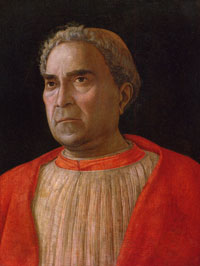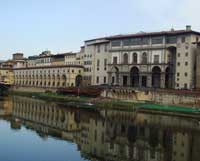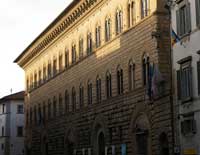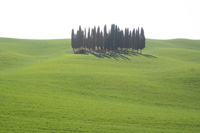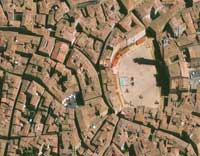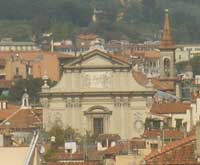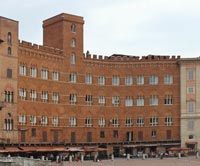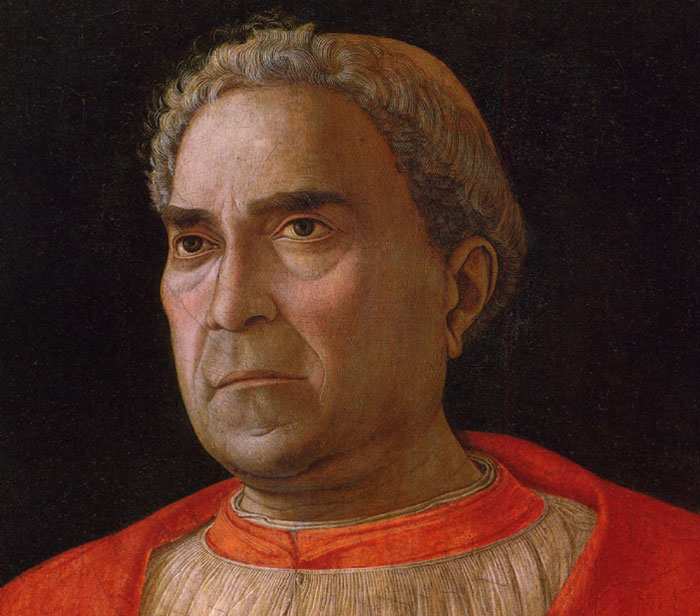 |
|
Andrea Mantegna, Portrait of Cardinal Ludovico Trevisan (detail), 1459-1460, tempera on panel,Gemäldegalerie, Berlin
|
|
Andrea Mantegna| Portrait of Cardinal Ludovico Trevisan |
| 'It has been said that the Renaissance witnessed the rediscovery of the individual. In keeping with this notion, early Renaissance Italy also hosted the first great age of portraiture in Europe. Portraiture assumed a new importance, whether it was to record the features of a family member for future generations, celebrate a prince or warrior, extol the beauty of a woman, or make possible the exchange of a likeness among friends. This exhibition will bring together approximately 160 works—by artists including Donatello, Filippo Lippi, Botticelli, Verrocchio, Ghirlandaio, Pisanello, Mantegna, Giovanni Bellini, and Antonello da Messina, and in media ranging from painting and manuscript illumination to marble sculpture and bronze medals, testifying to the new vogue for and uses of portraiture in fifteenth-century Italy.'[1] |
| Cardinal Trevisan, later also known as Scarampi Mezzarota, took part in the council of Mantua in 1459: the portrait was commissioned to Mantegna when the artist was still in Padua, little time before he established himself in Mantua. Mantegna painted monumental likenesses that combine the particularity of Eyckian physiognomy with the authority of ancient Roman busts. The portrait of Cardinal Trevisani, the physician to Pope Eugenius IV, suggests a statue come to life, a bust animated by light washing over its forceful features. Description The cardinal is portrayed from in a three-quarter position over a dark background, with strong chiaroscuro effects which enhance the volume of the figure, turning it into a king of Roman-style bust in painting. The serious and concentrated glance and the detail of the closed lips underline the strong character of the man, who was not only a politician and diplomat, but also a war leader. Mantegna gave a notable attention not only to the details of the face (lips, wrinkles, the clerical tonsure), but also to the garments, indicating his high social status. |
| Sources La Grande Storia dell'Arte - Il Quattrocento, Il Sole 24 Ore, 2005 Kleiner, Frank S. Gardner's Art Through the Ages, 13th Edition, 2008 Manca, Joseph. Andrea Mantegna and the Italian Renaissance, 2006 [1] The Cardinal Camerlengo of the Holy Roman Church, Cardinal Ludovico Scarampi Mezzarota Trevisano, was born in Padua in 1401, of "low and obscure lineage", where he studied medicine and natural science, obtaining a doctorate from the University of Padua in 1425. His early successes in papal service were in the military sphere. It is said that he was one of Pope Eugenius' many physicians [Gaetano Marini, Degli archiatri ponttifici Volume primo (Roma 1784), xxix, 142-143 ]. In 1435 he was appointed Bishop of Trau, and in 1437 he became Archbishop of Florence. He was appointed Patriarch of Aquileia in 1439. In 1440 he was created Cardinal with the titulus of San Lorenzo in Damaso. He was again successful in the military sphere in 1440, aiding the Papacy and Florence against Niccolò Piccinino the captain of the Lombard League. As Legate of the March of Ancona he freed the March of Ancona from the clutches of Francesco Sforza. In the last months of Pope Eugenius' life he was in charge of all of the castelli and fortified places under papal control. He was named admiral of the papal fleet in 1455, and fought the Turks in the eastern Mediterranean (1455-1459), on account of which he did not participate in the Conclave of 1458. He was promoted Cardinal Bishop of Albano in 1465, and died in that year in Rome. He was buried in his titular church. [Source: Cardella III, 95-98; Moroni, Dizionario storico-ecclesiastica 45, 12-14] [2] The Metropolitan Museum of Art, The Renaissance Portrait from Donatello to Bellini | www.metmuseum.org |
||||
Art in Tuscany | Art in Tuscany | Giorgio Vasari | Lives of the Most Excellent Painters, Sculptors, and Architects |
||||
|
This page uses material from the Wikipedia articles Andrea Mantegna and Portrait of Cardinal Ludovico Trevisan, published under the GNU Free Documentation License. |
||||
Holiday homes in the Tuscan Maremma | Podere Santa Pia |
||||
| Vasari Corridor, Florence | Podere Santa Pia |
Podere Santa Pia, garden |
||
 |
||||
Palazzo Medici Riccardi, Florence |
San Gimignano |
Florence, Duomo |
||
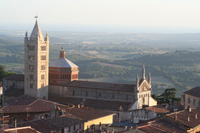 |
||||
Val d'Orcia" tra Montalcino Pienza e San Quirico d’Orcia. |
Siena, Piazza del Campo |
Massa Marittima |
||
San Marco a Firenze |
Siena, Palazzo Sansedoni |
Firenze, Duomo |
||

